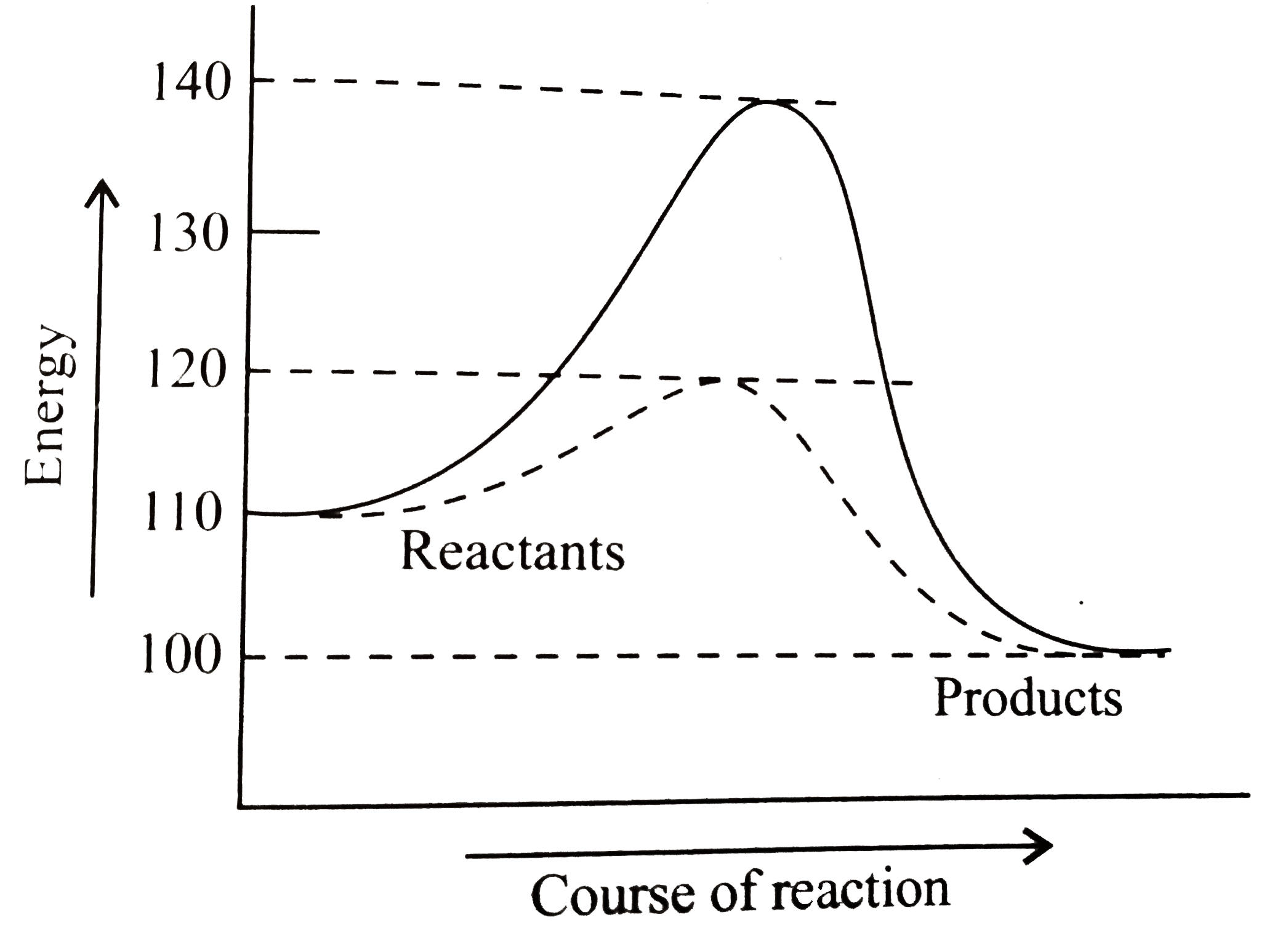For a given reaction, energy of activation for forward reaction (Eaf is 80 kJ mol−1.ΔH=−40kJ mol−1 for the reaction. A catalyst lowers Eaf to 20 kJ mol−1. The ratio of energy of activation for reverse reaction before and after addition of catalyst is :
1.0
0.5
1.2
2.0
The correct Answer is:D
Step by step video & image solution for For a given reaction, energy of activation for forward reaction (E_(af) is 80 kJ mol^(-1).DeltaH=-40"kJ mol"^(-1) for the reaction. A catalyst lowers E_(af) to 20 kJ mol^(-1). The ratio of energy of activation for reverse reaction before and after addition of catalyst is : by Chemistry experts to help you in doubts & scoring excellent marks in Class 12 exams.
Similar Questions
The activation energy for the forward reaction X→Y is 60kJmol−1 and ΔH is −20kJmol−1. The activation energy for the reverse reaction is
View Solutionin a reversible reaction the energy of activation of the forward reaction is 50 kcal .
the energy of activation for the reverse reaction will beView SolutionThe energies of activation for forward and reverse reaction for A2+B2⇔2AB are 180kJmol−1 and 200kJmol−1 respectively. The presence of catalyst lowers the activation energy of both (forward and reverse) reactions by 100kJmol−1. The enthalpy change of the reaction (A2+B2→2AB) in the presence of catalyst will be (in kJmol−1):
View SolutionIn an exothermic reaction X→Y, the activation energy is 100kJmol−1 of X. The enthalphy of the reaction is −140kJmol−1. The activation energy of the reverse reaction Y→X is
 View Solution
View SolutionRefer picture given below.
(a) Calculate ΔH for the reaction and the energy of activation for the forward reaction as well as backward reaction.
(b) The dotted curve is in the presence of a catalyst. What is the energy of activation for the two reactions in the presence of catalyst?
( c) Will the catalyst change the extent of reaction?
 View Solution
View SolutionIf a reaction A+B→C is exothermic to the extent of 30KJmol−1, the the forward reaction has an activation energy , 70KJmol−1, the activation energy for the reverse reaction is
View SolutionFor an endothermic reaction energy of activation is Ea and enthlpy of reaction is ΔH (both in kJmol−1). Minimum value of Ea will be
View SolutionThe activation energy of a first order reaction at 300K is 60 kJmol−1. In the presence of a catalyst, the activation energy gets lowered to 50kJmol−1 at 300K. How many times the reaction rate change in the presence of a catalyst at the same temperature ?
View SolutionThe energy of activation for a reaction is 100KJmol−1. The peresence of a catalyst lowers the energy of activation by 75%. What will be the effect on the rate of reaction at 20∘C, other things being equal?
View SolutionThe activation energy for a first order reaction is 60 kJ mol−1 in the absence of a catalyst and 50 kJ mol−1 in the presence of a catalyst. How many times will the rate of reaction grow in the presence of the catalyst if the reaction proceeds at 27∘C ?
View Solution

